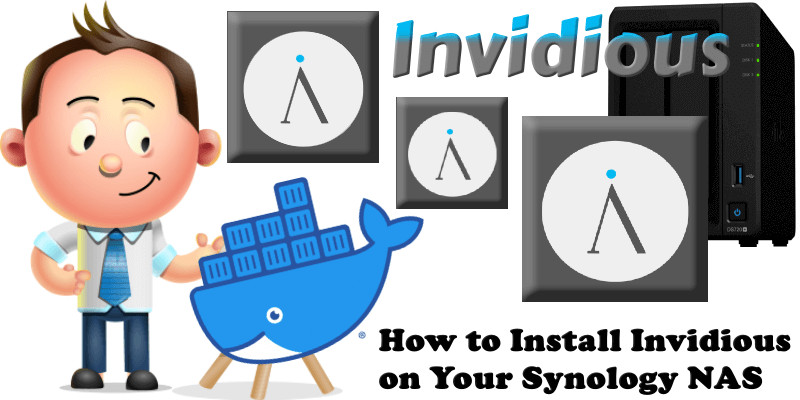
Invidious is a free and open-source alternative frontend to YouTube. It is available as a Docker container, or from the GitHub master branch. It is intended to be used as a lightweight and privacy-respecting alternative to the official YouTube website. One of the best things about Invidious is that you can watch YouTube videos without ADS. In this step by step guide I will show you how to install Invidious on your Synology NAS using Docker and Portainer. If you are looking for Invidious alternative, check out my guide on How to Install Piped on Your Synology NAS.
STEP 1
Please Support My work by Making a Donation.
STEP 2
Install Portainer using my step by step guide. If you already have Portainer installed on your Synology NAS, skip this STEP. Attention: Make sure you have installed the latest Portainer version.
STEP 3
Make sure you have a synology.me Wildcard Certificate. Follow my guide to get a Wildcard Certificate. If you already have a synology.me Wildcard certificate, skip this STEP.
STEP 4
Go to Control Panel / Login Portal / Advanced Tab / click Reverse Proxy. Follow the instructions in the image below.
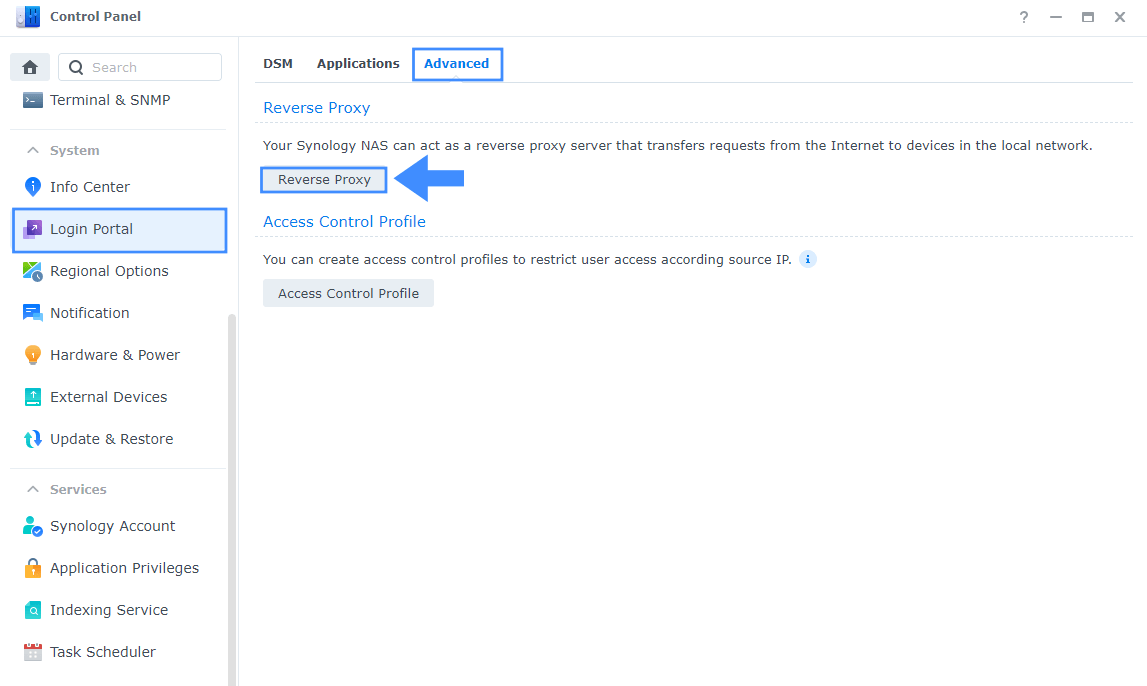
STEP 5
Now click the “Create” button. Follow the instructions in the image below.
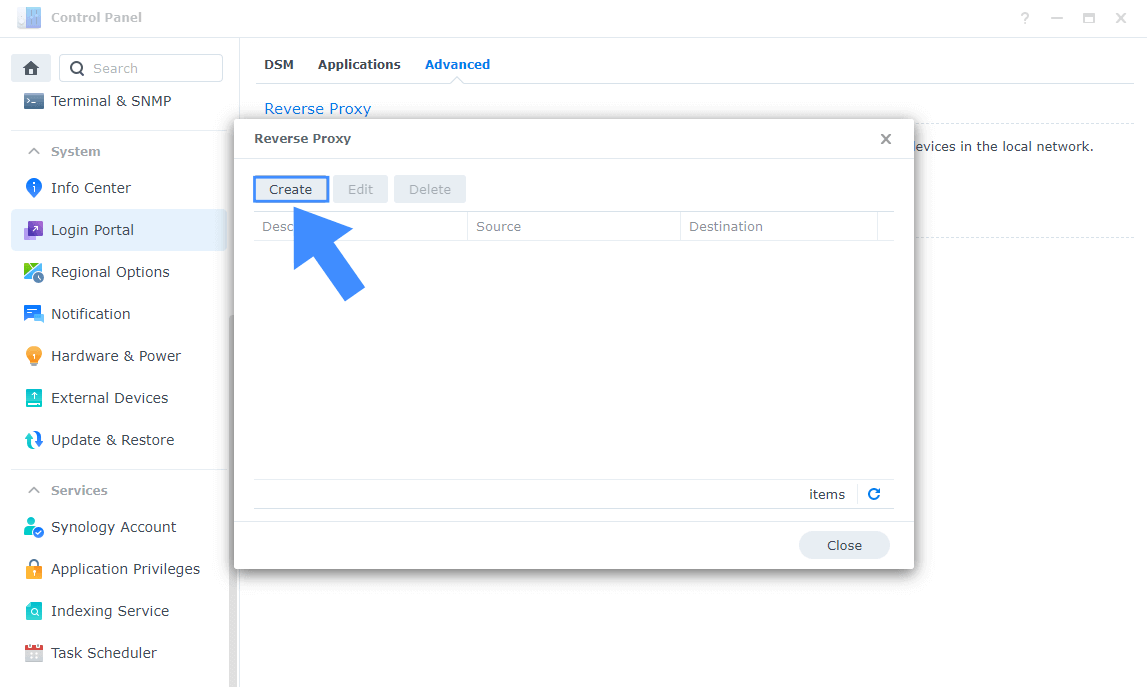
STEP 6
After you click the Create button, the window below will open. Follow the instructions in the image below.
On the General area, set the Reverse Proxy Name description: type in Invidious. After that, add the following instructions:
Source:
Protocol: HTTPS
Hostname: invidious.yourname.synology.me
Port: 443
Check Enable HSTS
Destination:
Protocol: HTTP
Hostname: localhost
Port: 7601
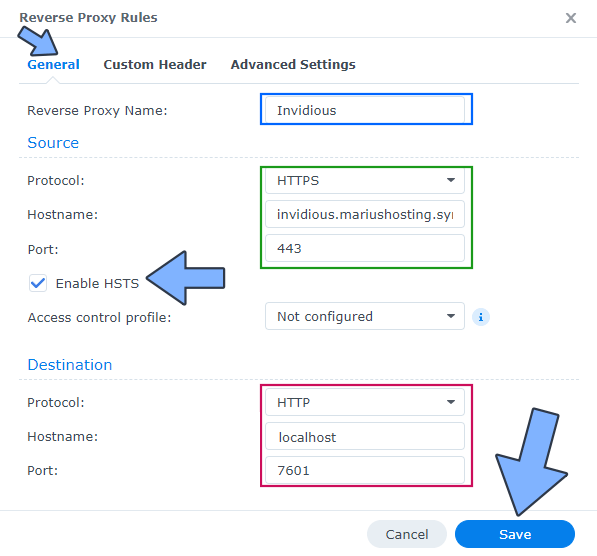
STEP 7
On the Reverse Proxy Rules, click the Custom Header tab. Click Create and then, from the drop-down menu, click WebSocket. After you click on WebSocket, two Header Names and two Values will be automatically added. Click Save. Follow the instructions in the image below.
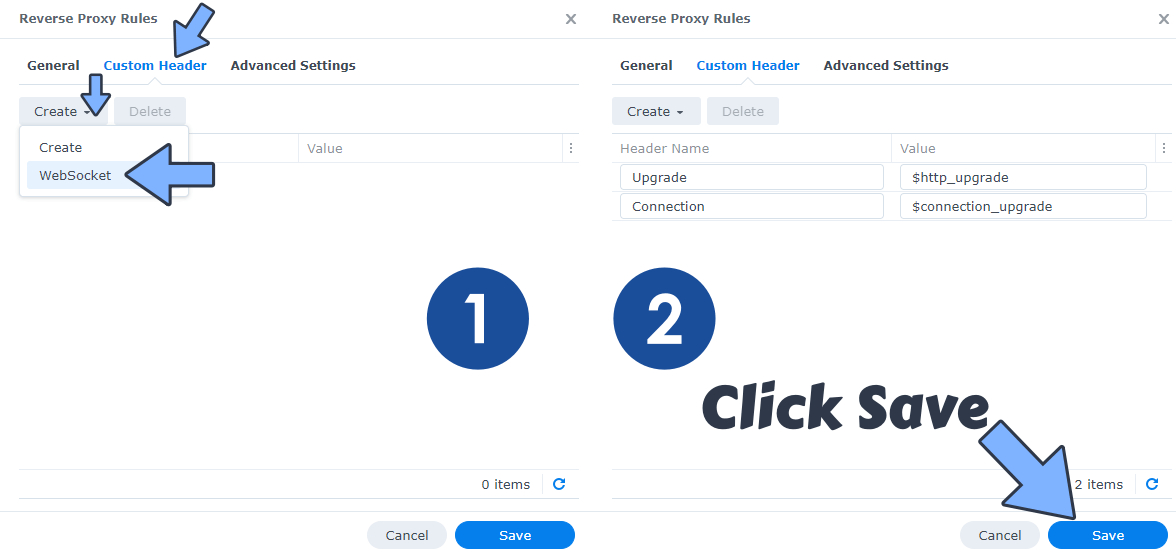
STEP 8
Go to Control Panel / Network / Connectivity tab/ Check Enable HTTP/2 then click Apply. Follow the instructions in the image below.
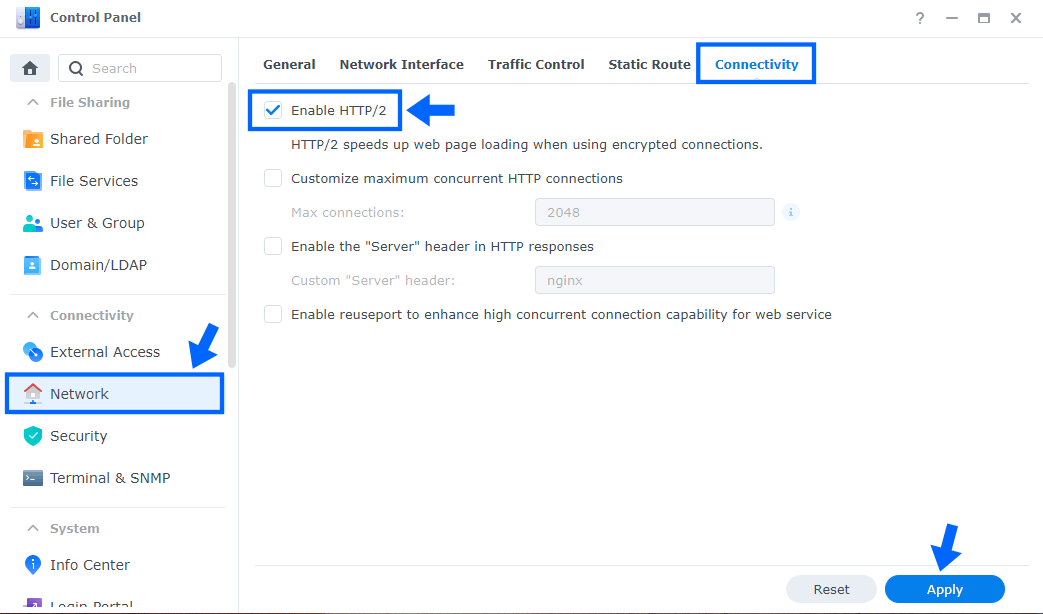
STEP 9
Go to Control Panel / Security / Advanced tab/ Check Enable HTTP Compression then click Apply. Follow the instructions in the image below.
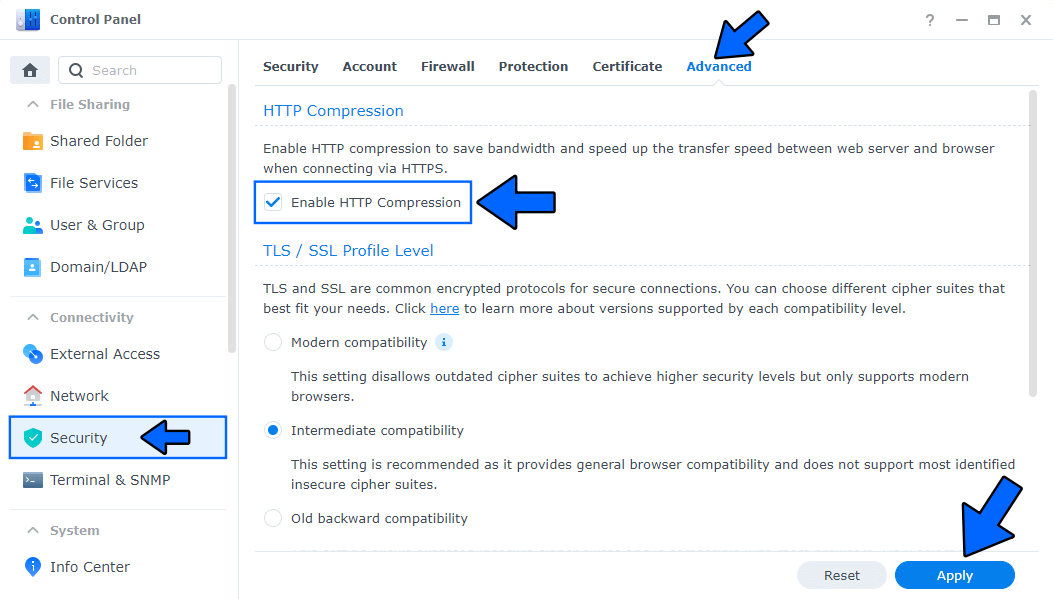
STEP 10
Go to File Station and open the docker folder. Inside the docker folder, create one new folder and name it invidious. Follow the instructions in the image below.
Note: Be careful to enter only lowercase, not uppercase letters.
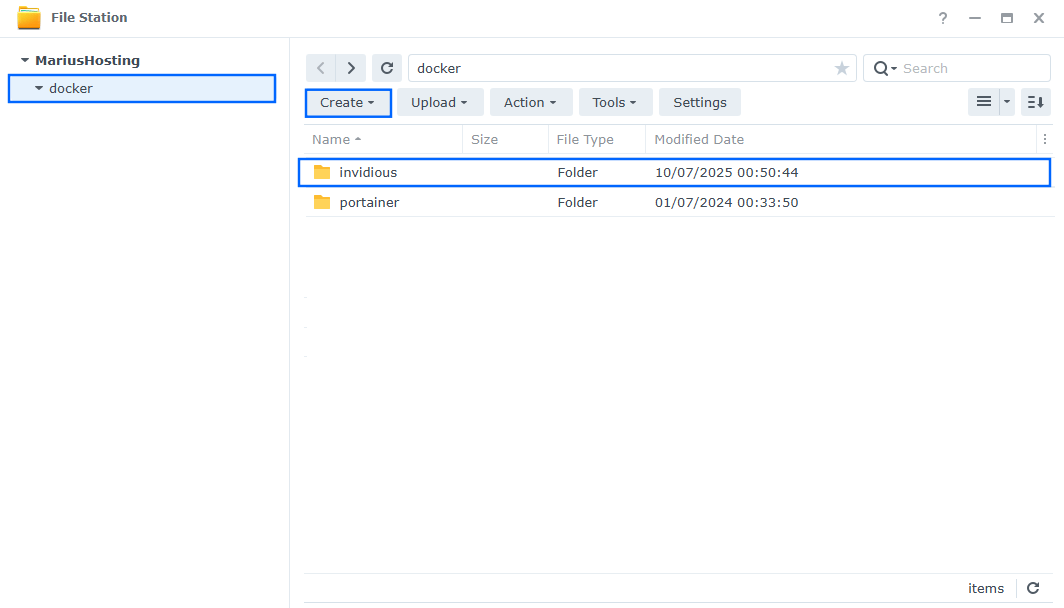
STEP 11
Now create two new folders inside the invidious folder that you have previously created at STEP 10 and name them db and companion. Follow the instructions in the image below.
Note: Be careful to enter only lowercase, not uppercase letters.
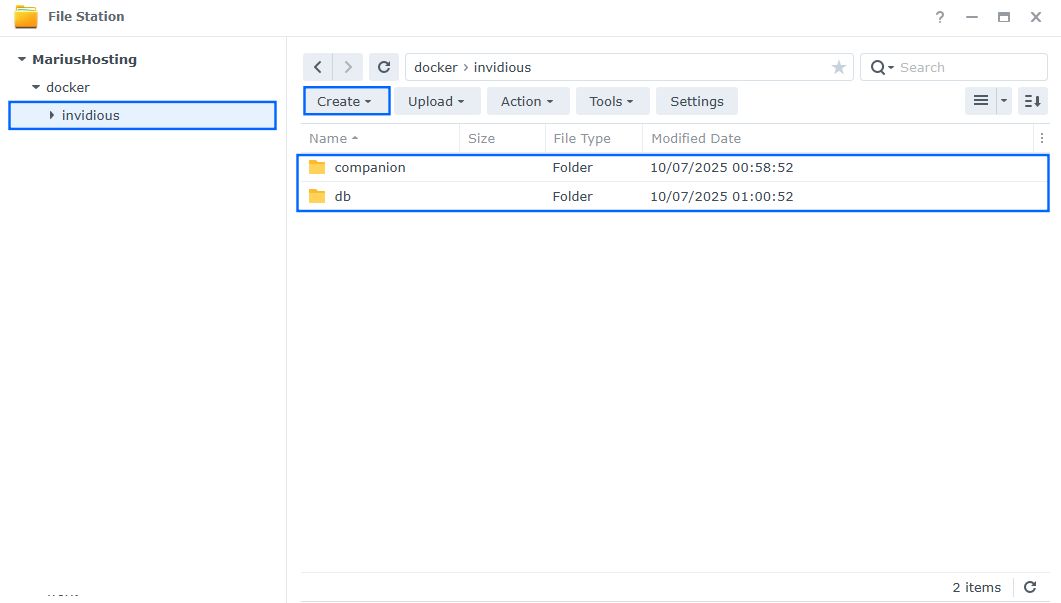
STEP 12
Log into Portainer using your username and password. On the left sidebar in Portainer, click on Home then Live connect. Follow the instructions in the image below.
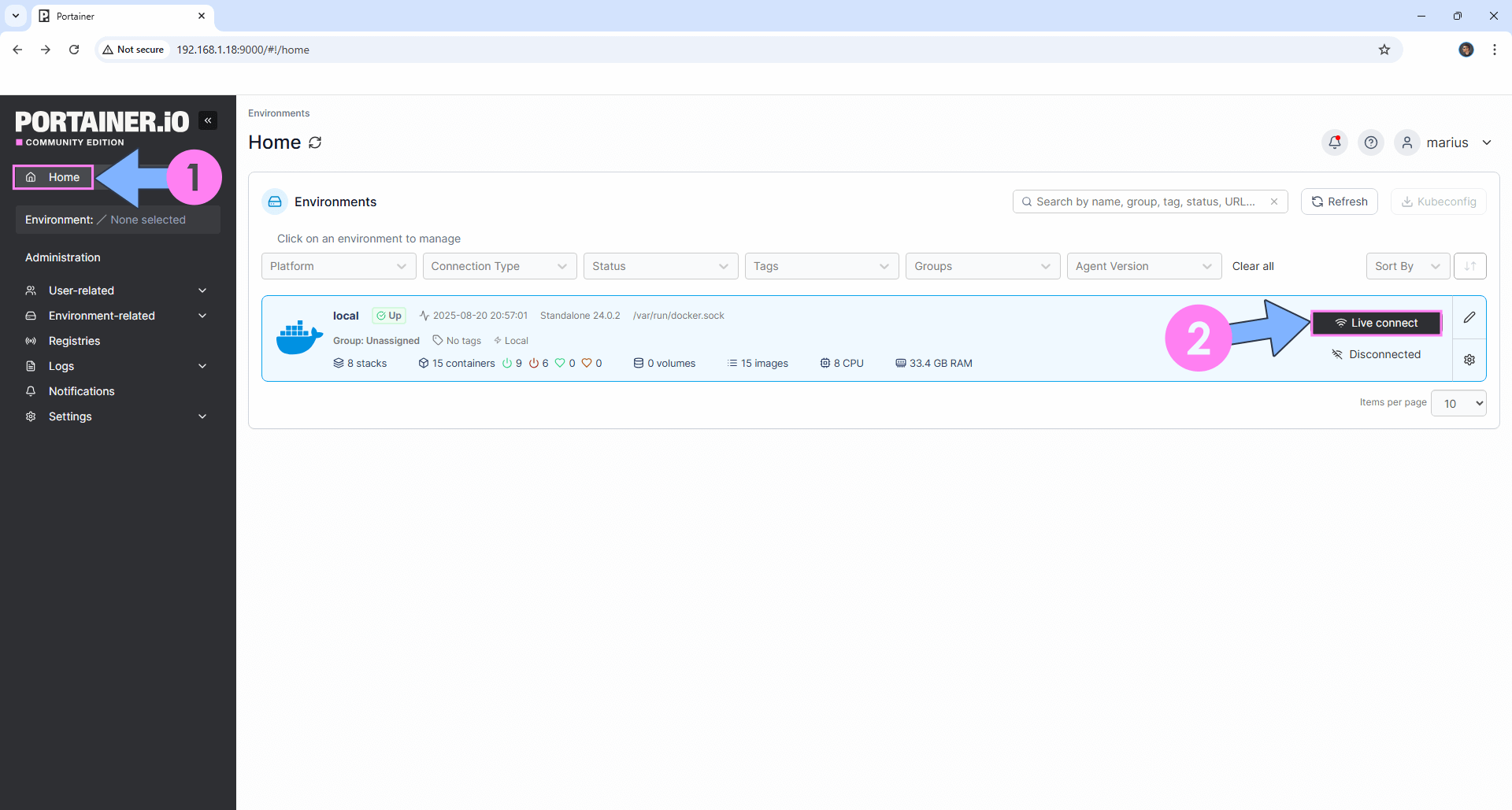
On the left sidebar in Portainer, click on Stacks then + Add stack. Follow the instructions in the image below.
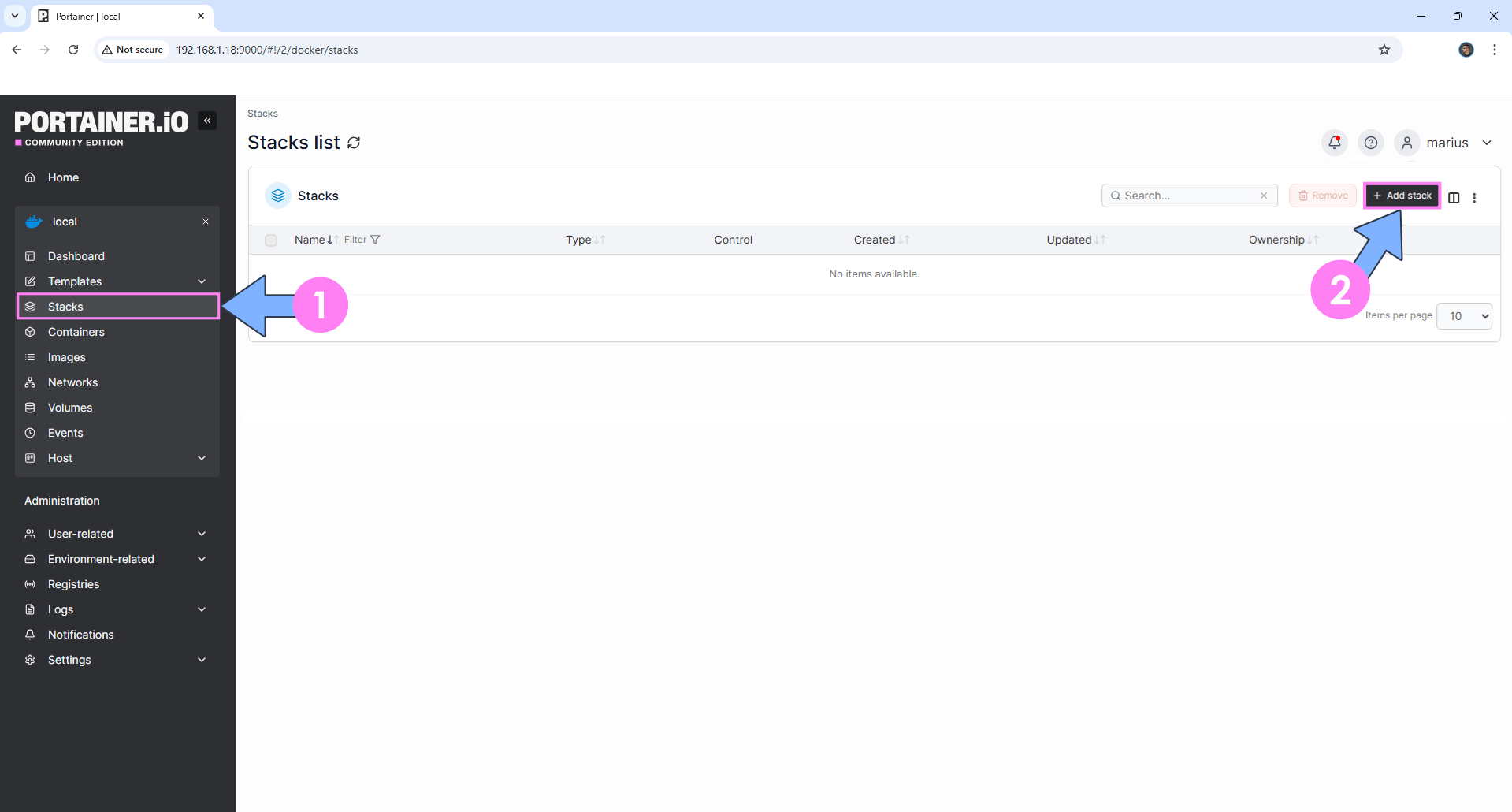
STEP 13
In the Name field type in invidious. Follow the instructions in the image below.
services:
invidious-db:
image: postgres:18
container_name: Invidious-DB
hostname: invidious-db
security_opt:
- no-new-privileges:true
healthcheck:
test: ["CMD", "pg_isready", "-q", "-d", "invidious", "-U", "kemal"]
timeout: 45s
interval: 10s
retries: 10
volumes:
- /volume1/docker/invidious/db:/var/lib/postgresql:rw
environment:
POSTGRES_DB: invidious
POSTGRES_USER: kemal
POSTGRES_PASSWORD: kemalpw
restart: on-failure:5
invidious:
image: quay.io/invidious/invidious:master
container_name: Invidious
healthcheck:
test: ["CMD-SHELL", "nc -z 127.0.0.1 3000 || exit 1"]
interval: 10s
timeout: 5s
retries: 3
start_period: 90s
hostname: invidious
user: 1026:100
security_opt:
- no-new-privileges:true
ports:
- 7601:3000
environment:
INVIDIOUS_CONFIG: |
db:
dbname: invidious
user: kemal
password: kemalpw
host: invidious-db
port: 5432
check_tables: true
captcha_enabled: false
default_user_preferences:
locale: ro
region: RO
external_port: 443
check_tables: true
invidious_companion:
- private_url: "http://companion:8282/companion"
invidious_companion_key: IjXhmpfeUFTvBpGK
hmac_key: e8b09fcc0882e8b646beab0135027f748c39f27acb142b339a9b199acd3b0a2b
domain: invidious.yourname.synology.me
https_only: true
restart: on-failure:5
depends_on:
invidious-db:
condition: service_started
companion:
condition: service_started
companion:
image: quay.io/invidious/invidious-companion:latest
container_name: Invidious-COMPANION
environment:
SERVER_SECRET_KEY: IjXhmpfeUFTvBpGK
cap_drop:
- ALL
read_only: true
volumes:
- /volume1/docker/invidious/companion:/var/tmp/youtubei.js:rw
security_opt:
- no-new-privileges:true
logging:
options:
max-size: "1G"
max-file: "4"
restart: on-failure:5
Note: Before you paste the code above in the Web editor area below, change the value numbers for user with your own UID and GID values. (Follow my step by step guide on how to do this.) 1026 is my personal UID value and 100 is my personal GID value. You have to type in your own values.
Note: Before you paste the code above in the Web editor area below, change the value for locale and region. ro and RO are abbreviations for Romania. You should use your own locale and region abbreviations. For example, for the United States you should use locale: us region: US.
Note: Before you paste the code above in the Web editor area below, change the values for invidious_companion_key and SERVER_SECRET_KEY. Generate your free 16 length key. ⚠️Warning: Do NOT use more than 16 characters. invidious_companion_key and SERVER_SECRET_KEY should use the same identical key.
Note: Before you paste the code above in the Web editor area below, change the value for hmac_key. Generate your free hmac key using IT-TOOLS. Check out my screenshot to get an idea.
Note: Before you paste the code above in the Web editor area below, change the value for domain. Type in your own synology.me DDNS that you have previously created at STEP 6 without https:// at the beginning.
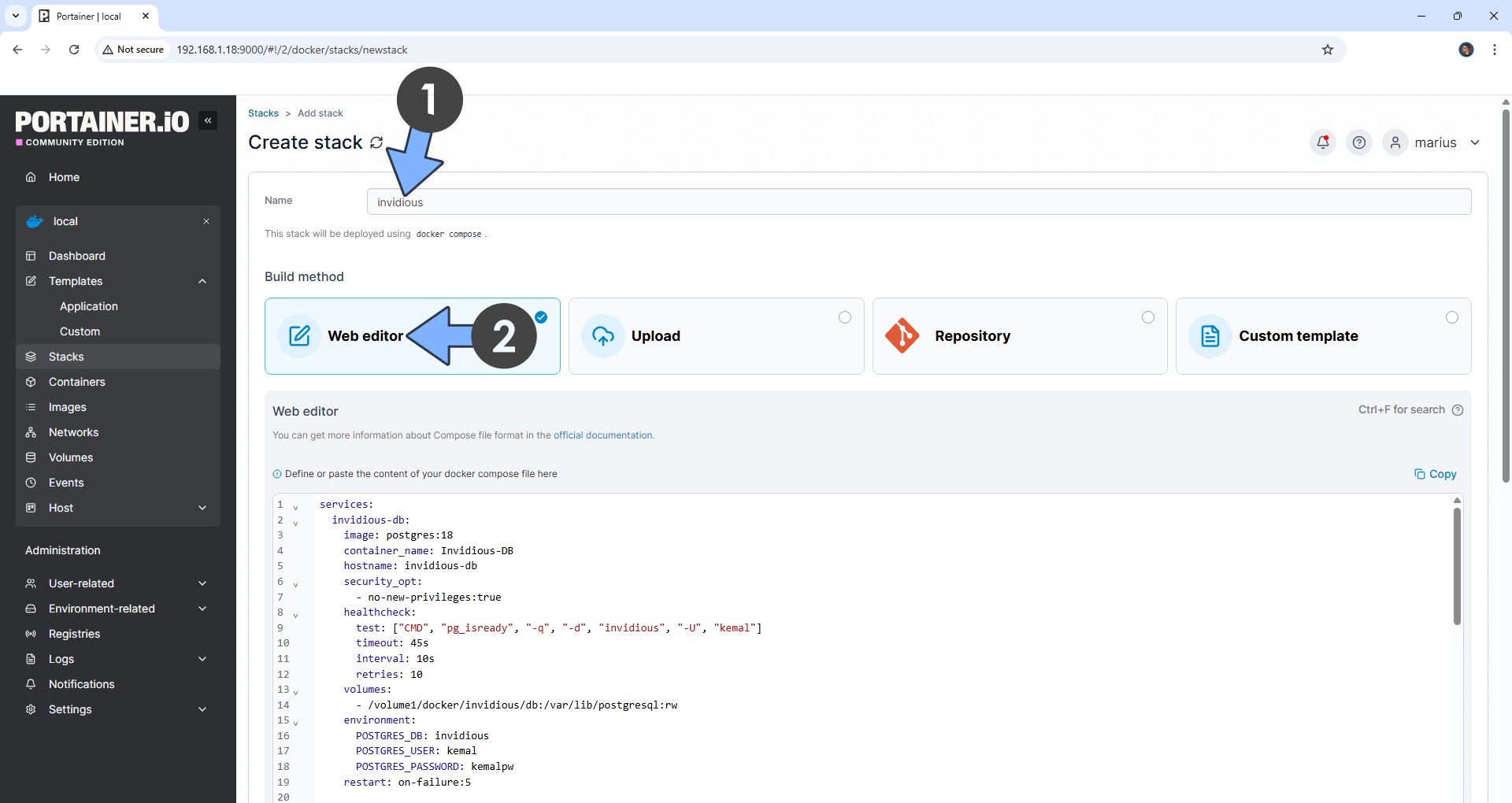
STEP 14
Scroll down on the page until you see a button named Deploy the stack. Click on it. Follow the instructions in the image below. The installation process can take up to a few minutes. It will depend on your Internet speed connection.
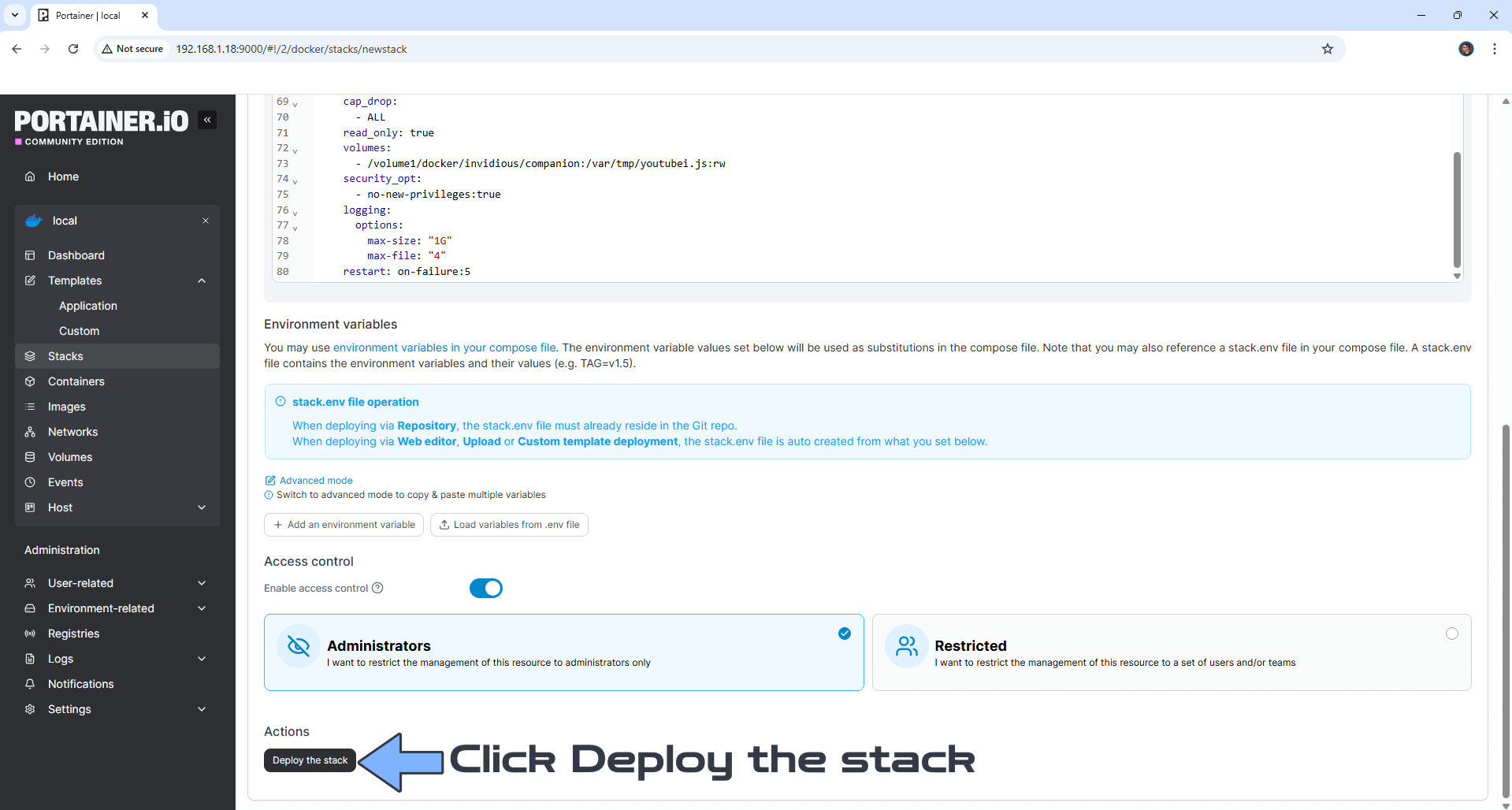
STEP 15
If everything goes right, you will see the following message at the top right of your screen: “Success Stack successfully deployed“.

STEP 16
🟢Please Support My work by Making a Donation. Almost 99,9% of the people that install something using my guides forget to support my work, or just ignore STEP 1. I’ve been very honest about this aspect of my work since the beginning: I don’t run any ADS, I don’t require subscriptions, paid or otherwise, I don’t collect IPs, emails, and I don’t have any referral links from Amazon or other merchants. I also don’t have any POP-UPs or COOKIES. I have repeatedly been told over the years how much I have contributed to the community. It’s something I love doing and have been honest about my passion since the beginning. But I also Need The Community to Support me Back to be able to continue doing this work.
STEP 17
Now open your browser and type in your HTTPS/SSL certificate like this https://invidious.yourname.synology.me In my case it’s https://invidious.mariushosting.synology.me If everything goes right, you will see the Invidious main page. Search for something then switch to Dark Mode. Follow the instructions in the image below.

STEP 18
You can view your favorite video!

STEP 19
You can change multiple settings by clicking the gear icon at the top right of the page. ⚠️Warning: Select Preferred video quality HD720 if you struggle to play video with the standard settings. Follow the instructions in the image below.

Enjoy Invidious!
If you encounter issues by using this container, make sure to check out the Common Docker issues article.
Note: Find out how to update the Invidious container with the latest image.
Note: How to Back Up Docker Containers on your Synology NAS.
Note: Can I run Docker on my Synology NAS? See the supported models.
Note: How to Free Disk Space on Your NAS if You Run Docker.
Note: How to Schedule Start & Stop For Docker Containers.
Note: How to Activate Email Notifications.
Note: How to Add Access Control Profile on Your NAS.
Note: How to Change Docker Containers Restart Policy.
Note: How to Use Docker Containers With VPN.
Note: Convert Docker Run Into Docker Compose.
Note: How to Clean Docker.
Note: How to Clean Docker Automatically.
Note: Best Practices When Using Docker and DDNS.
Note: Some Docker Containers Need WebSocket.
Note: Find out the Best NAS Models For Docker.
Note: Activate Gmail SMTP For Docker Containers.
This post was updated on Tuesday / November 4th, 2025 at 4:56 PM
